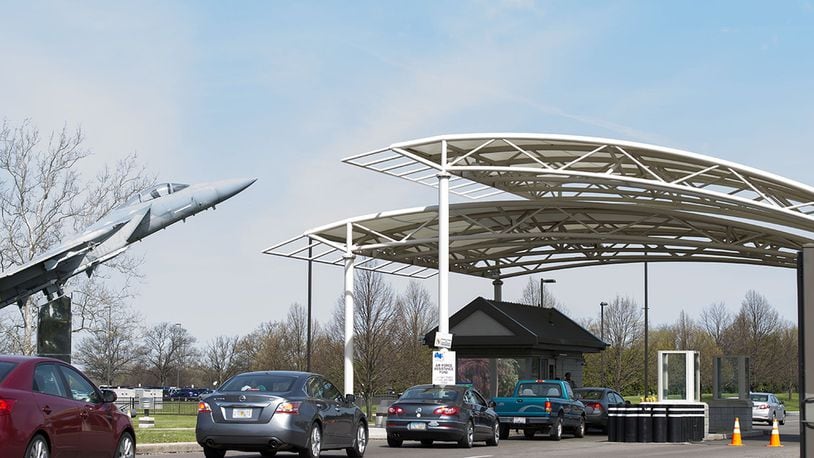“First and foremost, the safety and security of the installation and the 27,000 personnel who come onto the base daily is our top priority,” said 88th Security Forces Squadron commander Lt. Col. Aaron Rittgers.
“Long lines and delays at the gates have been occurring quite frequently. Whether its due to the closure of gates that don’t meet Air Force security standards, unannounced alarm activations, compressed work schedules or the absence of staggered reporting times, the 88th Security Forces Squadron wants you to know that we are diligently working to find resolutions to help alleviate the long lines and wait time,” said Rittgers.
A full gate traffic study is being conducted by the 88th Civil Engineer Squadron Traffic Engineering section to measure inbound and outbound traffic patterns. The traffic study will help improve resource management and gates changes to help with the traffic flow.
During rush hour, the 88th SFS is using all available personnel resources, including its staff personnel and entry authorization gate liaisons, to assist with manpower at the gate entry points. The program is currently being reviewed by the 88th Air Base Wing leadership, and adjustments will be made as necessary.
When certain alarms activate on the installation, the security of the installation will always take precedence; therefore, delays and closures at the gate will occur to ensure that a subject would not be able to exit the base after committing a potential crime.
“The base populace also plays a hand in the reducing gate traffic on the installation,” said 88th SFS Staff Sgt. Anson Soper, NCO in charge of police services and crime prevention.
There is a 100 percent “hands on” identification card verification when entering the installation. “Prior to approaching the gate, have your common access card in a location in your vehicle that is quickly accessible instead of leaving it in a wallet or purse where it would take additional time to retrieve,” said Soper
Soper added that if there are passengers in the vehicle, they will also need to show identification.
Another action that can help smooth the process is to follow the hand signals given by the security forces defenders at the gate. Moving to another lane when directed helps utilize all the open lanes.
“Drivers should also stay cognizant of the traffic around you,” said Soper. “When drivers get distracted, not only can they potentially cause a vehicle accident, they could also cause additional delays for the rest of the base community.”
Staggering work-center arrival and departure times, as well as using alternate gates, will also help to alleviate wait times at the gate.
“Remember that every commuter contributes to traffic, so it is up to all of us to ensure that we are not contributing in a negative manner to higher wait times at the installation entry points,” said Soper.
“I moved here from Washington, D.C., last summer and know nothing gets one’s blood pressure up like sitting in traffic. So the Defenders of the Mighty 88th SFS appreciate your patience and support while we explore all options to improve our installation entry control process” said Rittgers.
About the Author
